June Herping Event Info Page for Attendees
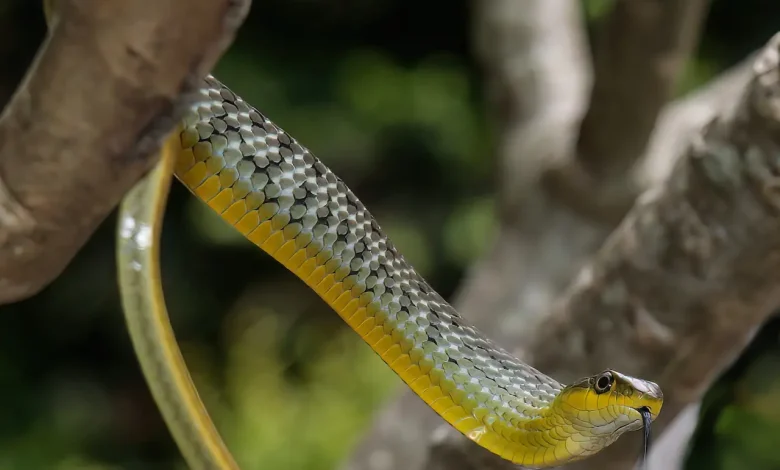
THIS IS THE MAIN INFO PAGE FOR EVERYTHING CONCERNING THE JUNE 12 EVENT.
If you have any other suggestions – do let me know ( <-click).
Though your own list may vary, use this as a starting point. There is also a video at the bottom you might want to watch.
SCHEDULE
CLICK HERE for the tentative schedule. The activities will look something like this, though we are in the process of finding new place to go – backup places, etc. We do have a new cave we can look at, and a forest hike we’ll probably be adding shortly.
WEATHER INFO
It will be hot in June. It’s very hot in April – May, and then as the rains begin it will cool off for part of the day, and then hopefully at night a bit if the clouds cover the skies after 3-4 pm. Still, there are fans in the rooms and though it is enough for me, you may want to bring an extra fan with you – or buy another one when you arrive.
There are mosquito nets above the beds at the resort. Probably you will have the fan pointed at the net – and this blocks some of the air, so you may be rather hot I think, without 2 fans.
An extra fan can also help to blow-dry some of your clothes after you wash them in the sink.
MOSQUITOS
DEET 28 or higher is recommended to keep mosquitos away. Be very cautious about spraying your hands or arms, and then touching snakes, geckos, lizards, or other wildlife. The chemicals can damage or kill them. I never wear mosquito lotion or spray on my hands or arms. I wear a very light long-sleeved shirt, and spray my neck and sometimes my legs – but usually I wear pants. Even when hot!
Bring or buy a rechargeable mosquito racquet for your bungalow!
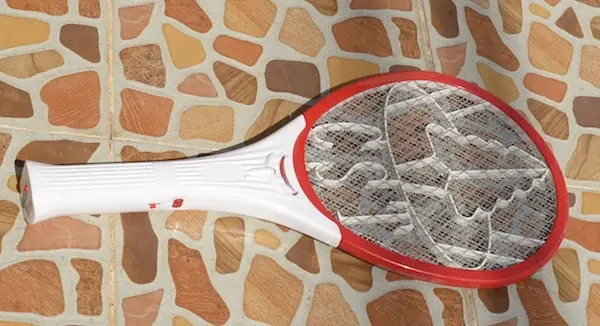
CLOTHES – WHAT TO BRING?
I will be in shorts, running shoes, and t-shirts all day – unless we’re herping. When herping I wear long lightweight pants tucked into my socks to keep the ants and termites out. I wear a t-shirt and a very lightweight shirt over top of that. I wear a hat with wide rim to keep mosquitos off my neck and head, and I usually wrap a snake-bag or towel around my neck to keep mozzies off me.
The resort has a towel for each person in the room – but you might want to bring another. You will probably want to bring:
- your own body soap, shampoo, clothes detergent, etc.
- razors, toothbrush, toothpaste
- deoderant – please!
- DEET Spray
- sunblock lotion
- hangers for clothes to dry on
- a hammock if you have one
- multi-plug A/C electric extension cord to plug in your electronics to charge
- 3 prong to 2 prong adapters for your electrical wires!
- wide brim hat to block sun and bugs
- rain poncho and hat
There is a hammock on most of the porches of the bungalows. You can hang hangers there to dry clothes. Or, you can string a rope across the porch.
SHOES
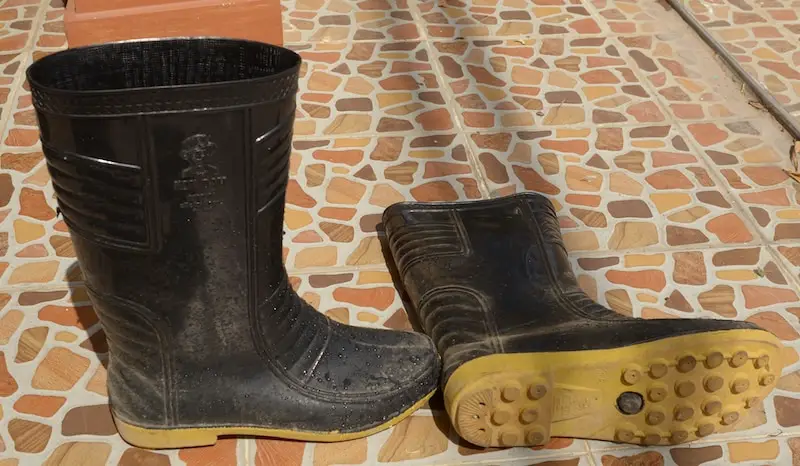
If you can, before you arrive, buy a pair of cheap (299 THB) rubber boots like those above. These are really durable, and have a good tread on the bottom. I buy mine a little big, but another guy I know recommends them to be snug. So, up to you. I found my boots at the little market in a place where they sell shoes. We can maybe get you a pair shortly after you arrive here.
I wear socks and long pants with these boots – and I tuck my pants into my socks.
Most of the herping will be on dirt path, concrete path, road, or some other surface where we can easily see the main snake we have to watch out for during this event – the Malayan Pit Viper (photo below).
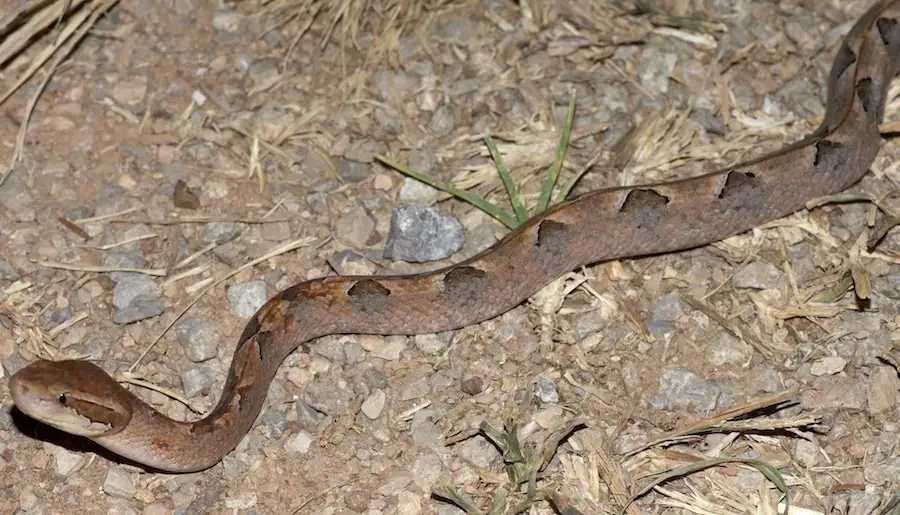
In areas where we cannot see our own feet – it is essential to have boots to cover the feet, ankles and shins to protect from this snake. I have found about twenty of these snakes at the resort over the years, so, they are here.
I talked to a guy who treated venomous snake bites in Cambodia for 6 years and he told me he never saw a Malayan pit viper bite anywhere close to the knee – so, as long as your boots cover up to the bottom of your knee, you’ll be fine.
We won’t be wearing the rubber boots much because we won’t be walking through grass or other vegetation where we cannot see our feet well. Still, bring them because you might feel a lot safer with them on. They are uncomfortable after a couple hours of walking though!
My main goal is that nobody is bitten by THIS SNAKE, because the effects are so bad.
FLASHLIGHT / TORCH
This is one piece of equipment that you cannot afford to save money on. You can do it a couple of different ways. I’m probably going to order a decent headlamp here in a few days. Just because the flashlights I usually buy break easily. I have three cheap lights at the moment, which were each just $10 to $20 at BIG C. They use 3 AAA batteries, and the batteries last for about 2 hours. Each flashlight has a zoom function to focus the beam either wide, or tight and very bright. I strongly recommend you have a light like this to handhold – even if it is a backup.
UPDATE: I’ve bought 5 headlamps and tested them all. The best option is one of the Petzl lights – either the Petzl Tikka RXP, or the new Petzl Reactik. Or, an even better choice, but more money is the Petzl Nao II with over 500 lumens of light, and about 90 mins. of battery life. If you use it on Reactive Technology mode, the light will last 3+ hours. Really quite good. Still, you’ll need another battery. They are $60!
Petzl is releasing an upgrade to their Petzl Nao II, it will be called the Petzl Nao+. It has more lumens, and longer battery. It has a red light in the back of the head. It has easy connectivity to your smart phone for custom profiles. It is supposed to be out by the end of 2016.
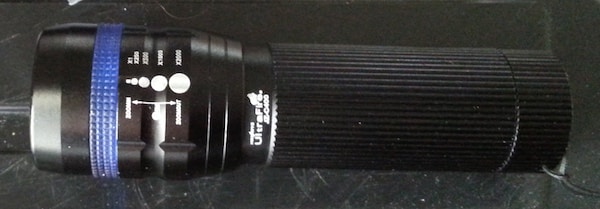
Make: ULTRAFIRE. MODEL: JZ-C400. I have two of these – one for a backup. It takes 3-AAA batteries – rechargeable or store-bought. The batteries only last 2 hours before needing changed. It has a really smooth zoom feature that is very helpful spotting snakes high in trees, or far away on the ground. The beam, when wide, is evenly lit and lights up just enough. I have dropped other UltraFire flashlights in the pond and pulled them out quickly – and they work fine. This one with the adjustable beam may not be as waterproof, but works fine in a light rain.
Looking for snakes for hours at a time can wear you down. I notice that if the beam of my light is too bright – it hurts my eyes before long. I like it bright, but there is a limit. Some lights are extremely bright and burn through batteries very quickly.
I recommend a bright, evenly lit beam – not with a very bright spot in the center – as it hurts the eyes quicker.
Considerations in Buying a Flashlight / Headlamp
- Only buy LED lights – not tungsten bulb flashlights – they are not bright enough, and they eat batteries too fast.
- Headlamps attract more bugs flying right into your eyes. I really don’t like that, and if there are many bugs at night I’ll just use the hand-held flashlights instead.
- Some headlamps have non-removable batteries you cannot replace, and they only last 1-2 or even 3 hours. That is not long enough.
- You will need at least 5 hours of battery life for some of the herps we do. You will need extra batteries in most cases. I don’t know any light that burns bright for 5 hours.
- At the BIG C in Krabi, they have only a couple of brands – and none of them are high quality. Good if you buy 2-3, but otherwise, you cannot rely on them. Better to buy a good light, Ebay, or maybe you’re lucky enough to live in Bangkok or somewhere else they have good lights.
- Have a backup light in case one fails.
OTHER GEAR TO BRING
- emergency whistle
- passport
- any medical information doctors would need to know – allergies, etc.
- waterproof bags – like diving bags if you will have electronics with you
- chargers for everything – check and double check that you have all the necessary chargers for phone, camera, computer, flashlights, headlamps, etc.
- your own pillow case?
FIRST AID SUPPLIES
We carry a small first aid kit, but if there is anything else you need to ensure your good health – bring it. That includes Ventolin or other breathers, heart medicine, and every kind of medicine you require. Don’t rely on a Thailand pharmacy to have what you need.
Other first aid items you might bring:
- plasters (band-aids)
- 3 compression bandages (elastic)
- iodine solution
- alcohol handy-wipes
Do not bring snake kits with suction cups, they are not used. They actually increase the damage to tissue.
Emergency Contact Phone Numbers. Family, health insurance cards w/phones, blood type, allergies, medicines taking regularly, in a plastic ziplock bag.
Emergency Cash or Easy ATM Withdrawal. Bring enough for hospital treatment ($2,000 USD recommended). The hospital will begin treatment without a large payment, but within a day or so they’ll start getting anxious. Probably best if you setup a Paypal account that can be used by friends back in your home country to Paypal me or other friends here payment for hospital costs as needed in an emergency.
SNAKE IDENTIFICATION BOOKS
Snake ID Book. I have the following:
A Photographic Guide to Snakes and Other Reptiles of Thailand and South-East Asia by Cox et al. This book is helpful, and yet it is by no means comprehensive or error-free. It’s a small, thin book that is convenient if you have nothing else. I have seen them for $52-342 USD. They are NOT worth anything close to that. I bought mine for about $15 at this Thailand-based online store: DCOTHAI.com. I don’t see the book available there any longer.I did see a paperback online for $30. Published in 2010. Not sure if they made any updates. Mine was published in 1998.
Photos of Common Venomous and Non-Venomous Thailand Snakes. Covers some of the common snakes people are likely to find in Thailand. This is my book, and it’s FREE here in PDF. Get it at SmashWords.com in MOBI (for your kindle), or EPUB format for other e-reader devices. Page is here.
A Field Guide to the Reptiles of Thailand. By Cha-Nard, et al. I bought this as an ebook for $30 some dollars and I’d say it isn’t what I expected. It does have a lot of information, is almost comprehensive in covering all snakes of Thailand, and the images (no photos) are easy to blow up and see in detail. Some of the images I’ve been very happy with. Others are lacking considerably.
This is the best book on the market at the moment, until one of us comes up with something really good – the ultimate handbook… Anybody interested in doing that? I found this for just $18 in ebook format, $38 in paperback and $125 in hardcover. I strongly suggest you get the ebook format which can be read on mobile phone, tablet or computer for 2 reasons.
One – you can search text and instantly find the information. Two – you can blow up the drawings to see closely what you wouldn’t be able to see on a printed book. Highly recommended because I don’t see any good alternative.
I have another hardcover book of just venomous snakes of Asia – but cannot find it at the moment. It’s helpful, but hardly worth going to look for it.
Wear long pants – loose and lightweight at least at night. During the daytime I usually wear shorts, but I spray my legs with DEET if there are mosquitos about.
Pants should be long enough to tuck in to your socks. This keeps ants, termites, mosquitos, spiders, scorpions, and other stuff off your legs.
Wear a very light shirt – short sleeved, under a very light long-sleeve shirt. The super-lightweight North Face running shirts or something similar will keep you cooler and sweating less than cotton.
CAMERA GEAR
1. DSLR Camera. If you haven’t bought a camera yet, I suggest you choose a Nikon or Canon camera. Here in Thailand the Canon gear is slightly less expensive, but the quality is basically the same. I use Nikon because of my familiarity with the menu system. No matter. Your camera should be somewhat weather resistant to survive the week in Thailand. Most newer model entry-level professional DSLR cameras with full-frame capability have some level of water resistance. Do check yours.
2. Waterproof Camera. We also bring along a Nikon waterproof point and shoot camera just in case we either want to get a shot in the water, rain, or at a waterfall. This is especially helpful if doing video in the rain, though the aperture isn’t very wide and the low-light capabilities of the camera are not stunning. It can produce an acceptable 1080p video in many cases.
3. Batteries for Camera and Flash. There are A/C power outlets for charging batteries in your room and at the restaurant. There could potentially be a couple hours or even a day without power. This happens in Thailand, so be prepared by charging all of your batteries to full capacity at home, and also any chance you get during your tour. Multiple chargers will help, as will a small electrical outlet – we will have some of these for you, don’t bring. Ideally your flashlight will take rechargeable batteries and store-bought, in case we do have a cut in power.
3. Flash. A powerful flash will be of some benefit during your tour, but really when working with the animals we will be, the on-camera flash as well as some added flashlight light – will be enough for most people. A ring flash is a helpful piece of gear, if you have it – bring it. What’s great is the LED flashlights and headlamps that you should have will show as white light when you photograph. It’s near daylight rating. I love my Ultra-Fire flashlight for that. I even supplement some natural light shots with my flashlight during the daytime. It is an amazing addition to your arsenal!
4. Lenses.
Zoom. I used to bring one – but unless you’re shooting birds, you probably won’t need or want to be carrying one around.
Macro – Micro (Nikon calls it). I typically use my 100mm F/2.8 Tokina micro lens for all of my close-up shots in the dark, and most of the daytime shots too. Make sure you bring a 100mm or better – 180, 200mm macro lenses are probably ideal so you don’t have to get that close to the wildlife. For venomous snakes, I really like the 100mm because it’s the ideal length to allow me to get some of the environment in the shot – which I like to do for each snake I find. It also allows me to get in close enough to get the details, without getting bitten.
Wide. If you’re planning on shooting any video, bring a wide angle lens too. During the daylight l bring my 17-35 F/4 Tokina pro lens. It’s super sharp, and it allows me to use my screw-in circular polarizer. Ideally you’ll be able to screw filters in, or have some other filter option for your wide-angle lens you will use for shooting landscapes in Thailand, Malaysia, or Laos – wherever your tour is.
5. Tripod. A good tripod might be helpful, but for what we’re doing, there is little time to setup a tripod to get a better shot. If you are thinking of bringing a tripod, the lightweight carbon fiber Manfrottos are great for travel and hiking.
Here is a video where I go over some of the gear I take on a night herping field trip in the rainforest in Krabi, Thailand:
